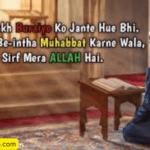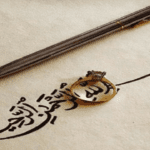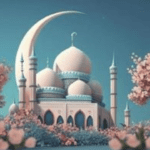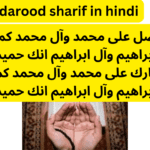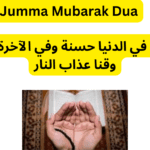Pain, whether physical, emotional, or spiritual, is an inevitable part of the human experience. In times of distress, individuals often turn to various remedies to find solace. One such powerful and deeply rooted practice is the art of Dua, a form of supplication and prayer found in many religious traditions.
Contents
- 0.1 Dua for Pain Relief
- 0.2 Understanding Pain in Various Forms
- 0.3 The Healing Power of Dua
- 0.4 Dua in Different Religious Practices
- 0.5 Specific Duas for Pain Relief
- 0.6 Personal Stories and Testimonials
- 0.7 Scientific Perspectives on Prayer and Healing
- 0.8 Incorporating Dua into Daily Routine
- 0.9 Cultural and Historical Significance
- 0.10 Dua and Modern Medicine
- 0.11 Challenges and Criticisms
- 0.12 Tips for Effective Dua
- 0.13 Dua Workshops and Community Practices
- 0.14 Beyond Physical Healing: Dua for Inner Peace
- 0.15 Conclusion
- 1 FAQs:
- 1.0.1 Is Dua only for Muslims, or can people of other faiths benefit from it?
- 1.0.2 How long does it take to experience the effects of Dua for pain relief?
- 1.0.3 Can Dua be used as a sole treatment for medical conditions?
- 1.0.4 Are there specific times or rituals for performing Dua for maximum efficacy?
- 1.0.5 How can one incorporate Dua into a busy daily schedule?
Dua for Pain Relief
Hazrat Aisha narrated that when the Messenger of Allah (SAW) came to a sick person, he would make Dua for pain relief and would say,
أَذْهِبِ الْبَاسْ رَبَّ النَّاسْ وَاشْفِ أَنْتَ الشَّافِي لاَ شِفَاءَ إِلاَّ شِفَاؤُكَ شِفَاءً لاَ يُغَادِرُ سَقَمًا
Take away the pain, O Lord of humankind, and grant healing, for You are the Healer, and there is no healing but Your healing that leaves no trace of sickness.
In Hindi: हे मानवजाति के भगवान, पीड़ा दूर करो, और उपचार प्रदान करो, क्योंकि तुम ही उपचारक हो, और तुम्हारे उपचार के अलावा कोई उपचार नहीं है जो बीमारी का कोई निशान नहीं छोड़ता है।
Check Out:
Understanding Pain in Various Forms

Physical Pain
Physical pain can be debilitating, affecting our daily lives and overall well-being. From chronic illnesses to temporary discomfort, the impact of physical pain is profound.
Emotional Pain
Emotional pain, often invisible to the eye, can be just as challenging to navigate. Heartbreak, grief, and anxiety are common forms of emotional distress that individuals seek relief from.
Spiritual Pain
The inner turmoil experienced on a spiritual level can contribute to an overall sense of unease. Dua addresses not only the physical and emotional aspects but also the spiritual dimension of pain.
The Healing Power of Dua
In essence, Dua is a means of connecting with a higher power, seeking guidance, and requesting relief from life’s challenges. The mind-body connection plays a crucial role in the effectiveness of Dua for pain relief.
Research suggests that the act of prayer and supplication can positively impact both mental and physical health. It is not merely a ritual but a profound way of channeling positive energy towards healing.
Dua in Different Religious Practices
Islamic Perspective
In Islam, Dua holds a special place in seeking Allah’s mercy and assistance. Specific prayers from the Quran and Hadith are recited for various forms of pain.
Dua in Other Religions
While Islam emphasizes Dua, other religions also incorporate prayer as a means of seeking solace and healing. From Christian prayers to Hindu mantras, the concept is universal.
Specific Duas for Pain Relief
General Healing Duas
Certain prayers encompass general well-being and seek protection from harm. These universal supplications can be a source of comfort in times of pain.
Duas for Physical Ailments
Dua for physical ailments addresses specific health concerns. Believers turn to these prayers with the hope of alleviating their pain and restoring health.
Duas for Emotional Distress
Emotional pain often requires a different approach. Specific prayers for peace of mind and emotional healing are recited to find solace.
Personal Stories and Testimonials
Real-life stories of individuals experiencing relief through Dua add a personal touch to the healing power of supplication. These testimonials highlight the transformative impact of faith and prayer on pain management.
Scientific Perspectives on Prayer and Healing
Research on Prayer and Health
Scientific studies explore the connection between prayer and health outcomes. While not a substitute for medical treatment, prayer can complement conventional approaches to well-being.
Mindfulness and Pain Management
The practice of mindfulness, inherent in Dua, is recognized in psychological and medical circles as an effective tool for managing pain and promoting mental health.
Incorporating Dua into Daily Routine
Creating a Sacred Space for Dua
Establishing a dedicated space for prayer enhances the focus and intention behind Dua. A tranquil environment fosters a deeper connection with the divine.
Developing a Consistent Practice
Consistency is key in any spiritual practice. Integrating Dua into daily routines ensures that it becomes a natural and meaningful part of one’s life.
Cultural and Historical Significance
Dua Traditions Across Cultures
Dua is not confined to a specific culture. Various traditions worldwide have their unique ways of seeking divine intervention for pain relief.
Historical Figures and Their Use of Dua
Throughout history, notable figures have turned to prayer in times of trouble. Their stories inspire individuals to embrace the timeless practice of Dua.
Dua and Modern Medicine
Integrating Spiritual Practices with Medical Treatments
The collaboration between spiritual practices and medical treatments is gaining recognition. Dua, when complemented with professional healthcare, can contribute to holistic healing.
Collaborative Approaches to Well-being
Healthcare providers increasingly acknowledge the role of spirituality in patient care. Collaborative efforts ensure a comprehensive approach to individual well-being.
Challenges and Criticisms
Skepticism Surrounding Prayer and Healing
While many find solace in prayer, skepticism exists regarding its efficacy. Addressing doubts and concerns is essential for fostering a nuanced understanding of Dua’s impact.
Addressing Doubts and Concerns
Open dialogue and a balanced approach help bridge the gap between skepticism and faith. Acknowledging the diverse perspectives surrounding Dua fosters a more inclusive discussion.
Tips for Effective Dua
Focused Intentions
Clarity and sincerity in one’s intentions enhance the effectiveness of Dua. Focused prayers align with a deeper connection to the divine.
Patience and Persistence
Results may not be immediate, requiring patience and persistence in practicing Dua. Consistent supplication reflects unwavering faith.
Dua Workshops and Community Practices
Joining Dua Groups
Participating in Dua workshops and community practices creates a supportive environment. Shared experiences strengthen the collective power of prayer.
Communal prayer fosters a sense of unity and shared healing experiences. Group dynamics enhance the potency of collective supplication.
Beyond Physical Healing: Dua for Inner Peace
Stress Reduction
Dua extends beyond physical healing to address mental well-being. Stress reduction through prayer contributes to overall inner peace.
Emotional Balance
Achieving emotional balance is a common goal of Dua. The practice promotes resilience and equanimity in the face of life’s challenges.
Conclusion
In conclusion, the power of Dua for pain relief transcends cultural and religious boundaries. Whether seeking physical, emotional, or spiritual healing, the act of supplication has the potential to transform lives. Embracing Dua as a complementary practice alongside modern medicine opens new avenues for holistic well-being.
FAQs:
Is Dua only for Muslims, or can people of other faiths benefit from it?
Dua is a universal practice, and individuals of all faiths can find solace and healing through supplication.
How long does it take to experience the effects of Dua for pain relief?
The timeline varies for each individual. Patience and consistent practice are key to experiencing the full benefits of Dua.
Can Dua be used as a sole treatment for medical conditions?
While Dua complements holistic well-being, it is not a substitute for professional medical treatment. Consultation with healthcare providers is essential.
Are there specific times or rituals for performing Dua for maximum efficacy?
While there are recommended times for prayer in various traditions, the sincerity and intention behind Dua are paramount for its effectiveness.
How can one incorporate Dua into a busy daily schedule?
Creating a dedicated space for Dua and integrating it into daily routines can make the practice more accessible, even in a busy schedule.



